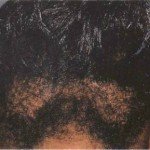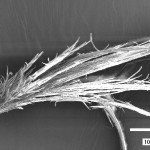Ringworm also known as Tinea or Dermatophytosis is actually a fungal infection of the skin. So why is it called ringworm, I hear you ask? The Ancient Greeks called it Herpes (which means circular or ring form) and the Romans associated the disease with the larval stage of Tinea, which is the genus for clothes moth. The two names were eventually combined to form the word “ringworm” before the actual cause of ringworm was known in the early 1800s.
Ringworm is given a specific name is depending on which area of the body is affected. The list below lists the various areas of the body that can be affected with ringworm (tinea) and the name given. In this article Tinea Capitis will be covered in the most detail.
Areas of the body where Ringworm can be found.
Head-Tinea Capitis
Beard -Tinea Barbae
Body- Tinea Corporis
Groin-Tinea Cruris
Face- Tinea Faciei
Hand-Tinea Mannuum
Foot-Tinea Pedis (“athlete’s foot”)
Nail-Tinea Unguium (Onychomycosis)
The fungi involved in Tinea Capitis are saprophytic T tonsurans fungi. These fungi are able to invade and break down the keratinized tissues of the skin, hair and nails. Their keratinophilia (keratin loving) behaviour allows them to use keratin as a growth substrate (food). Tinea Capitis can be a highly contagious infection. Whether or not a person becomes infected depends on the individual’s age and the strength of their immune system. For example a young child may easily contract scalp ringworm and spread it to other children
Clinical features of Tinea Capitis
As mentioned above the fungus that is the current predominant cause of tinea capitis is T. tonsurans. Scalp infections caused by this fungus are hard to diagnosis because of the wide and varying clinical presentations. However there are six main features to look out for:
•Grey Type-Grey circular patches of alopecia with scaling scalp.
•Black dots- This is where the hair has broken off at the scalp, leaving small lengths of hair shaft above the surface of the hair. The broken hair shafts appear as small dots on the surface of the scalp within angular patches of alopecia.
•Kerion- This results from a marked inflammatory response to the fungi. The scalp is usually boggy and swollen. Patients with kerion often have associated enlarged lymph nodes in the neck (cervical lymphadenopathy) or face.
•Diffuse pustular pattern-Pustules are seen scattered across the scalp. Painful lymphadenopathy may also be present.
•Moth Eaten- This appears as patchy hair loss with scaly scalp.
•Diffuse scale-This clinical feature can resemble dandruff. The scalp has widespread scale.
Treatment/ Management
Treatment for Tinea Capitis requires systemic antifungal drugs. The use of antifungal creams is unable to penetrate the hair shaft, and hence is not used to treat this infection.
If you suspect Tinea Capitis please visit your GP.





